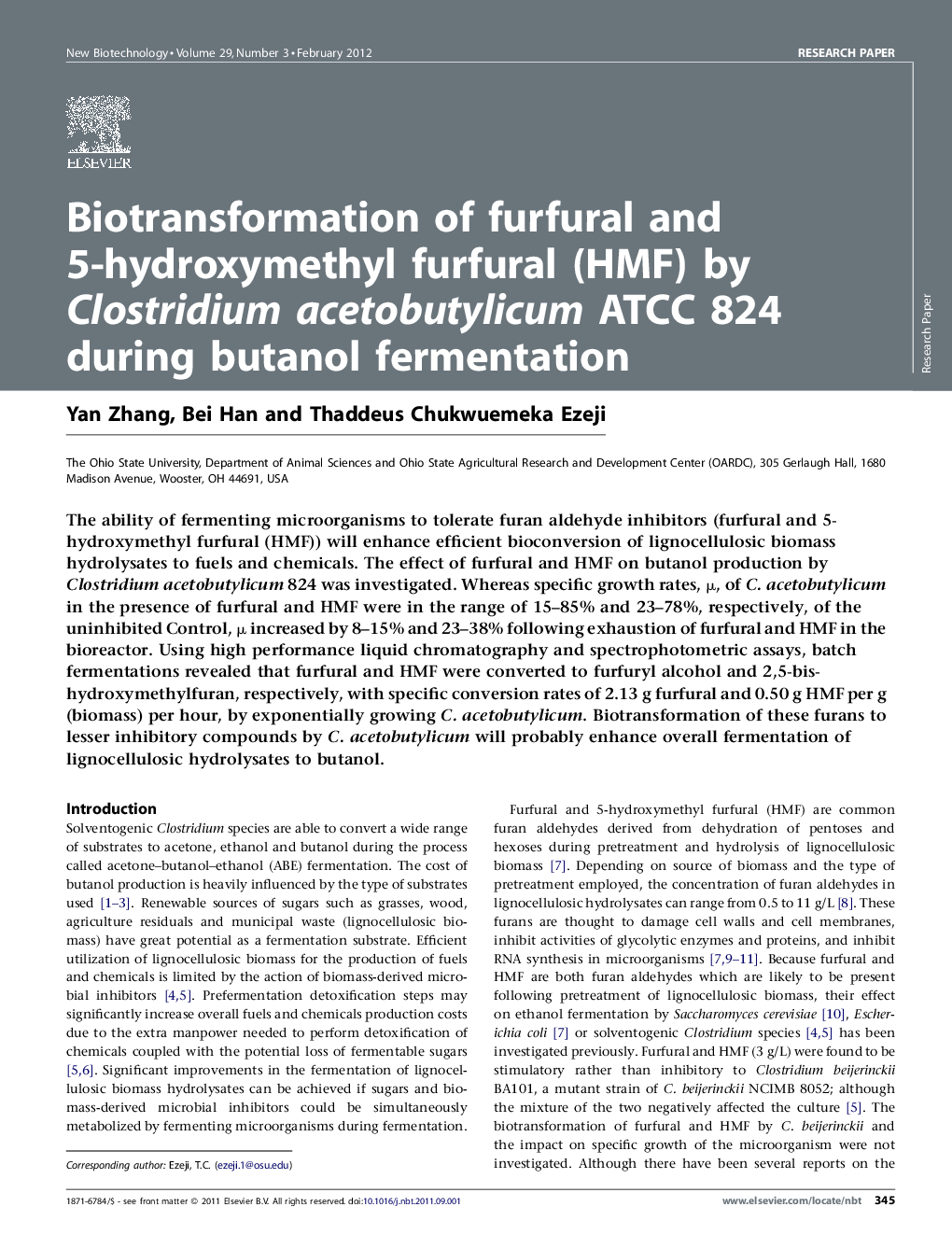| Article ID | Journal | Published Year | Pages | File Type |
|---|---|---|---|---|
| 33391 | New Biotechnology | 2012 | 7 Pages |
The ability of fermenting microorganisms to tolerate furan aldehyde inhibitors (furfural and 5-hydroxymethyl furfural (HMF)) will enhance efficient bioconversion of lignocellulosic biomass hydrolysates to fuels and chemicals. The effect of furfural and HMF on butanol production by Clostridium acetobutylicum 824 was investigated. Whereas specific growth rates, μ, of C. acetobutylicum in the presence of furfural and HMF were in the range of 15–85% and 23–78%, respectively, of the uninhibited Control, μ increased by 8–15% and 23–38% following exhaustion of furfural and HMF in the bioreactor. Using high performance liquid chromatography and spectrophotometric assays, batch fermentations revealed that furfural and HMF were converted to furfuryl alcohol and 2,5-bis-hydroxymethylfuran, respectively, with specific conversion rates of 2.13 g furfural and 0.50 g HMF per g (biomass) per hour, by exponentially growing C. acetobutylicum. Biotransformation of these furans to lesser inhibitory compounds by C. acetobutylicum will probably enhance overall fermentation of lignocellulosic hydrolysates to butanol.
► Growth rate of C. acetobutylicum decreases in the presence of furfural and HMF. ► Growth rate of C. acetobutylicum increases following depletion of furfural and HMF. ► C. acetobutylicum tolerates furfural and HMF up to 4 g/L. ► C. acetobutylicum transforms furfural and HMF into less toxic alcohols. ► C. acetobutylicum does not use furfural or HMF as sole carbon source.
